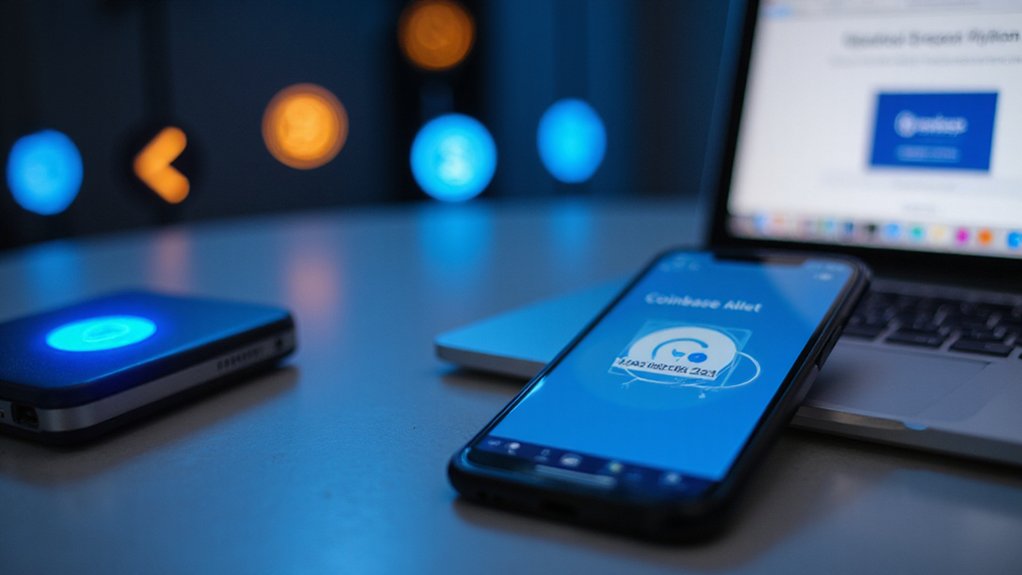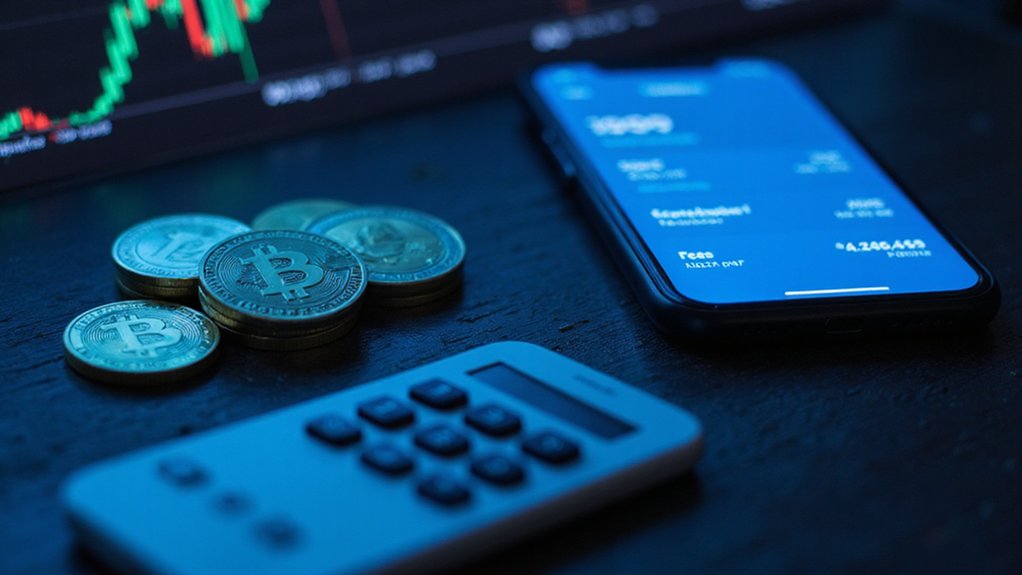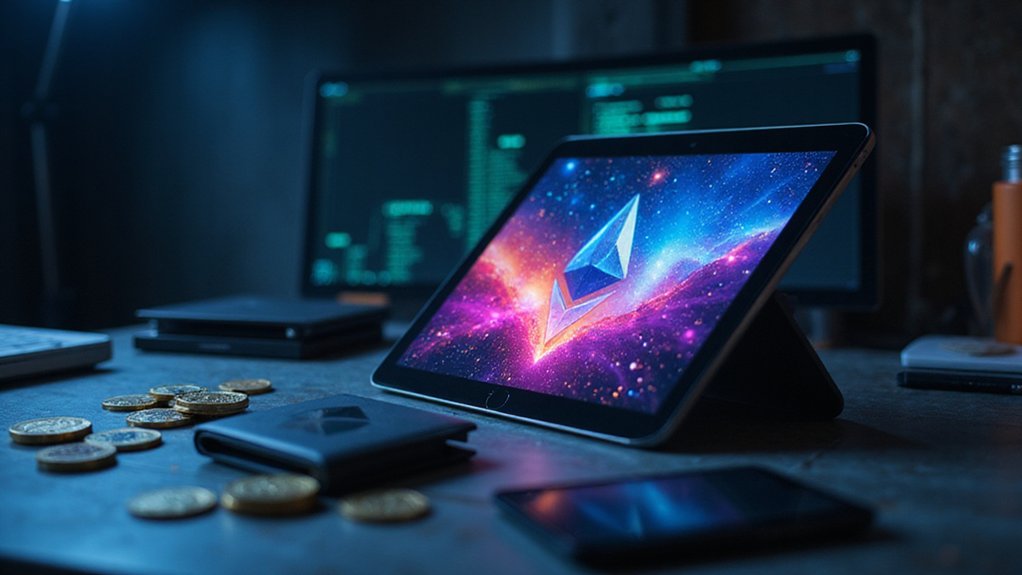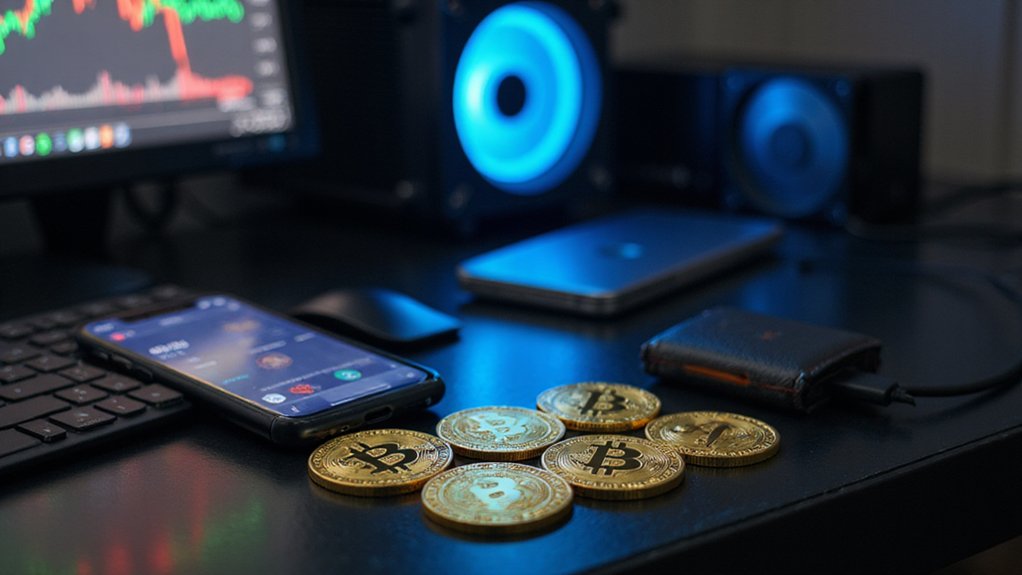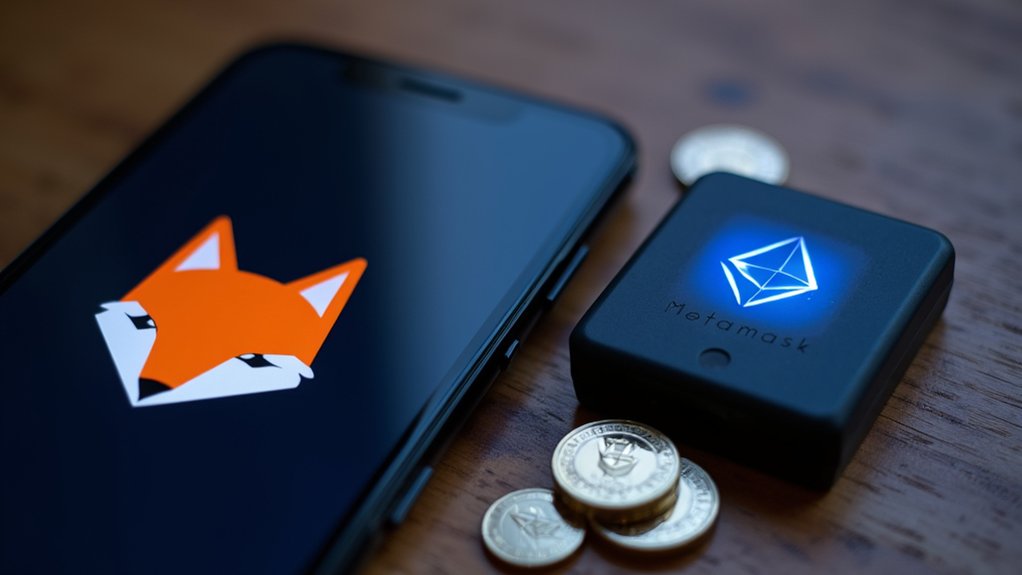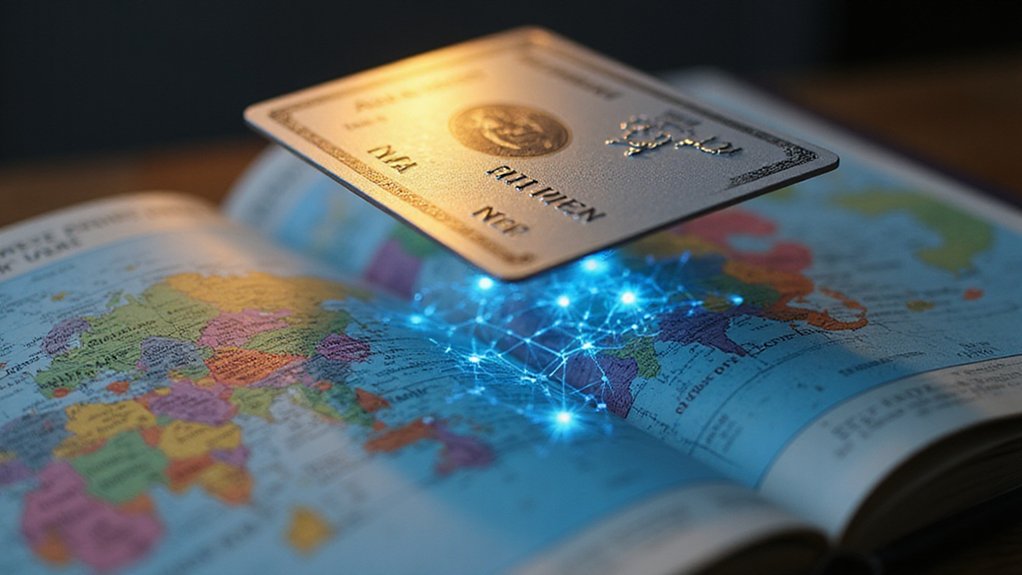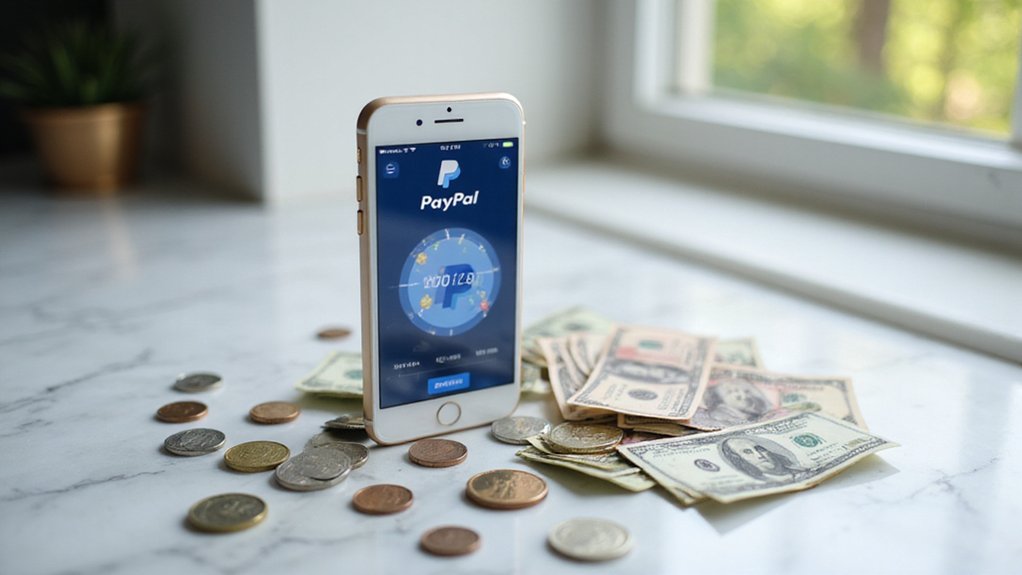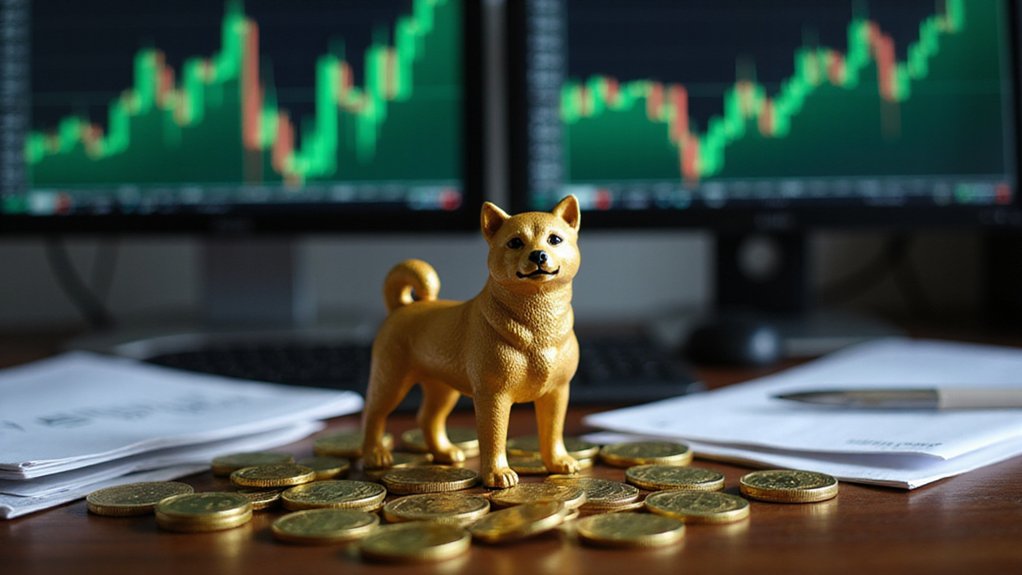To find your Coinbase wallet address, first log in (authentication being non-negotiable in the crypto sphere), then navigate according to your platform. Desktop users should locate their profile icon, select Send/Receive, and choose their desired cryptocurrency to reveal the alphanumeric address. Mobile users follow a similar path: authenticate, search for the cryptocurrency, and tap “Receive.” Network selection demands meticulous attention—erroneous choices render funds permanently displaced. The prudent investor initiates test transactions before committing significant capital.

Where exactly does one locate that elusive string of characters necessary for receiving cryptocurrency on Coinbase?
The process, while seemingly arcane to the uninitiated, follows a relatively straightforward protocol in both the desktop and mobile environments.
Users must first authenticate their identity by logging into their accounts—a security measure that, given the volatile and irrevocable nature of crypto transactions, proves indispensable rather than merely perfunctory.
Once securely within the platform’s ecosystem, desktop users go to their profile icon, typically situated in the upper right corner of the interface.
This grants access to the “Send/Receive” functionality—the gateway to one’s digital treasury.
The subsequent selection of a specific cryptocurrency (Bitcoin, Ethereum, et al.) reveals the corresponding wallet address, that alphanumeric sequence functioning as the financial destination for incoming assets.
Mobile adherents follow a parallel yet distinct pathway.
After launching the application and authenticating, they can utilize the search function to locate their desired cryptocurrency, then tap the “Receive” button—an action that conjures both the wallet address and its QR code equivalent.
This binary presentation accommodates both manual and optical transfer methods, the latter proving particularly efficacious in face-to-face transactions.
Prudent users recognize certain critical considerations.
Network selection demands particular attention, as erroneous choices can result in the permanent displacement of funds (a financial tragedy of Sophoclean proportions).
The practice of initiating test transactions—sending nominal amounts to verify address accuracy—represents not excessive caution but fundamental due diligence.
For those using Coinbase Advanced, the nomenclature shifts slightly; “Deposit” replaces “Receive” in the lexical hierarchy.
The substantive process, however, maintains its essential architecture.
Throughout all iterations, Coinbase offers thorough educational resources, recognizing that in the cryptosphere, ignorance rarely remains financially benign for long.
The cardinal rule remains inviolable: verify addresses with meticulous attention before committing to transactions of consequence.
Should you encounter difficulties during this process, remember to seek assistance through official support channels rather than responding to unsolicited messages claiming to represent Coinbase.
Frequently Asked Questions
Can I Change My Coinbase Wallet Address?
Users cannot manually modify Coinbase wallet addresses, which are cryptographically generated by design.
While deposit addresses automatically regenerate with each new transaction (a security feature rather than an inconvenience), previously generated addresses remain permanently linked to one’s account.
The platform does, however, permit modifications to ENS domain settings and residential address information—the latter requiring identity verification when changing jurisdictions.
Old addresses maintain functionality indefinitely, rendering address “changes” unnecessary as funds sent to historical addresses continue reaching their intended destination.
Is My Coinbase Wallet Address the Same for All Cryptocurrencies?
No, Coinbase wallet addresses are not the same across cryptocurrencies.
Each cryptocurrency on Coinbase receives its own unique address that follows that particular digital asset’s formatting protocol—Bitcoin addresses typically beginning with “1,” “3,” or “bc1”; Ethereum addresses following a different convention entirely.
This deliberate separation (which prevents the all-too-common and invariably tragic mistake of sending assets to incompatible address formats) necessitates retrieving the specific address for each cryptocurrency when facilitating transfers.
What Happens if I Send Crypto to the Wrong Address?
Sending crypto to an incorrect address—a modern financial equivalent of dropping one’s wallet into a dimensional void—typically results in permanent loss of funds.
Unlike traditional banking with its safety nets, blockchain’s immutable ledger offers no recourse for mistaken transactions.
The decentralized architecture that provides cryptocurrency’s vaunted freedom simultaneously eliminates the possibility of transaction reversal.
Without proper recipient verification, users effectively launch their digital assets into the cryptographic equivalent of a black hole¹.
¹Recovery services exist but rarely succeed without extraordinary circumstances.
How Secure Is My Coinbase Wallet Address?
Coinbase wallet addresses represent a rather elegant security solution—public identifiers requiring no concealment whatsoever.
This alphanumeric string merely points to one’s blockchain location without providing access to the contents therein.
The address itself poses no security threat when shared (unlike those perilously guarded private keys).
Coinbase enhances this foundation with robust features: SSL encryption, address whitelisting, and cold storage allocation keeping 98% of assets offline—a prudent arrangement in cryptocurrency’s occasionally turbulent waters.
Can I Recover Funds Sent to an Expired Address?
Coinbase Wallet addresses don’t actually “expire” in the conventional sense—they persist indefinitely on the blockchain.
Funds sent to older addresses remain recoverable provided the original recovery phrase is intact.
The blockchain’s immutable architecture guarantees transactions validate based on cryptographic accuracy rather than address age.
Simply restore the wallet using the 12-word seed phrase, and voilà—all associated addresses (and their balances) resurrect themselves, regardless of when they were last actively used.
